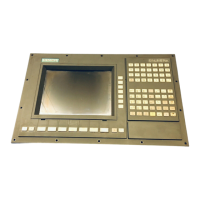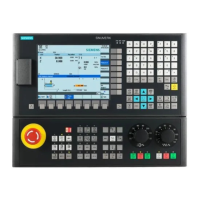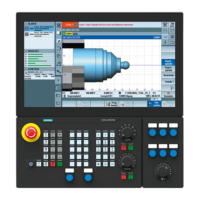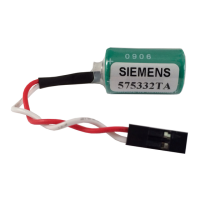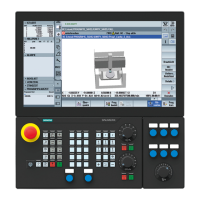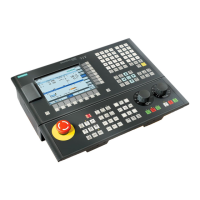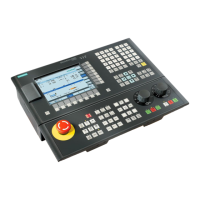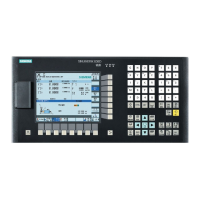08/2005 Starting Up HMI Embedded (IM2)
5 Creating In-House Alarm Texts
© Siemens AG, 2005. All rights reserved
SINUMERIK 840D sl/840D/840Di/810D HMI Installation and Start-Up Guide (IAM) – 08/2005 Edition
IM2/5-99
5.3 Syntax of text file
5.3.1 File name
Only those file names listed under "Editable alarm text files" in the previous section
may be used.
5.3.2 Example of an alpu.txt file
// CP = 1252
// IDEO = NO
// ANSI = YES
// UNICODE = NO
// VERSION = $VERSION
[SWITCHES]/ALARM
//**********************************************************************/
//* PLC user alarm file */
//**********************************************************************/
//* User entries: */
//* p.e. */
//* 800001 0 0 "Safety door faulty, error analysis required" */
//* max. 62 characters! */
//* Area for Application: 700000-799999,800000-809999,811000-819999
*/
//*******************************************************************/
Header
The text files begin with several comments, which contain information for the
runtime system.
You can enter texts that can be assigned freely after "[SWITCHES]/ALARM".
// CP = XXXX Number of the code page used to create the file (ANSI table, see
Table 5-5)
// IDEO = Use of Asian text:
Yes: Logographic language
No: Single-byte language (default: No)
// ANSI =
File format of the text file
Yes: ANSI code page
No: OEM code page (default: No)
// UNICODE = File format of the text file
Yes: Unicode
No: Single-byte (default: No)
// VERSION = Version identifier
Comment
You can insert comments before every line in the alarm text file. These comments
have to begin with "//".

